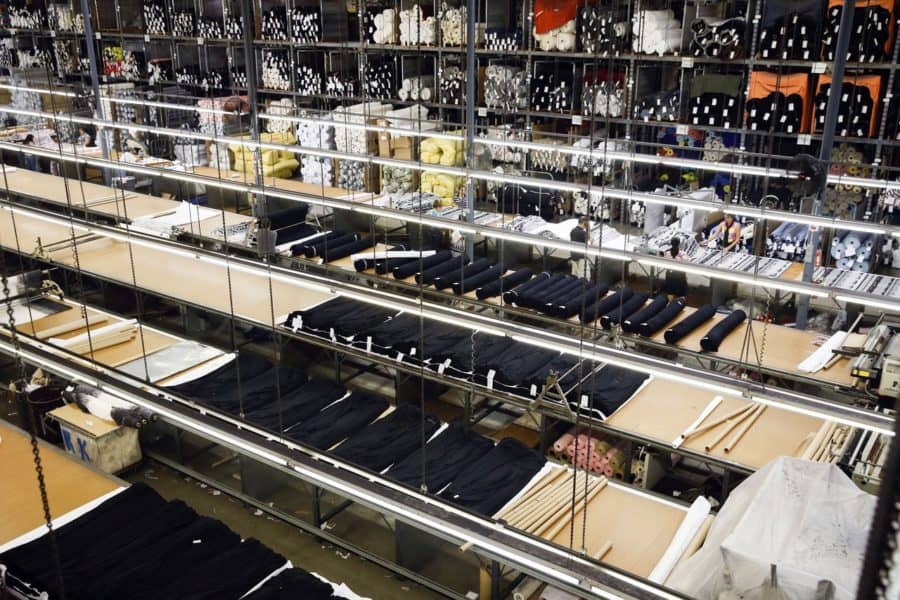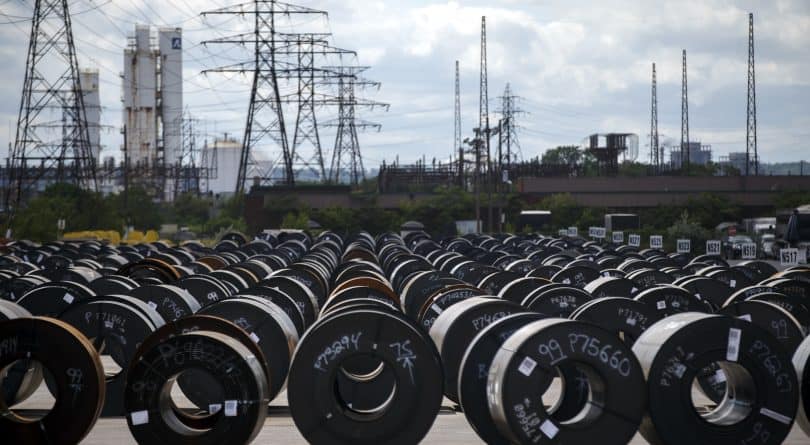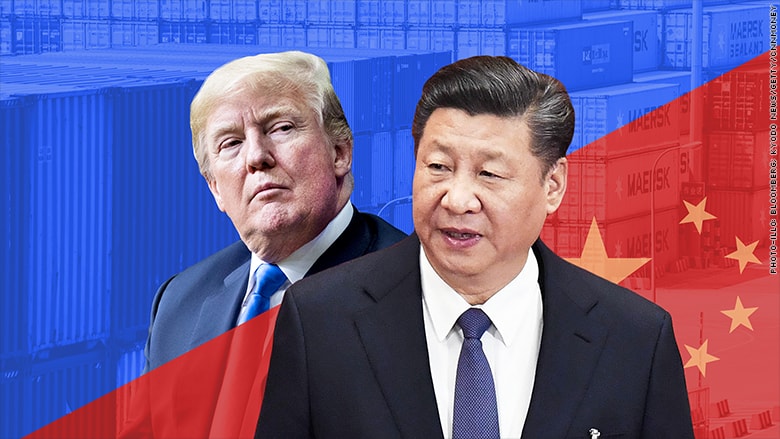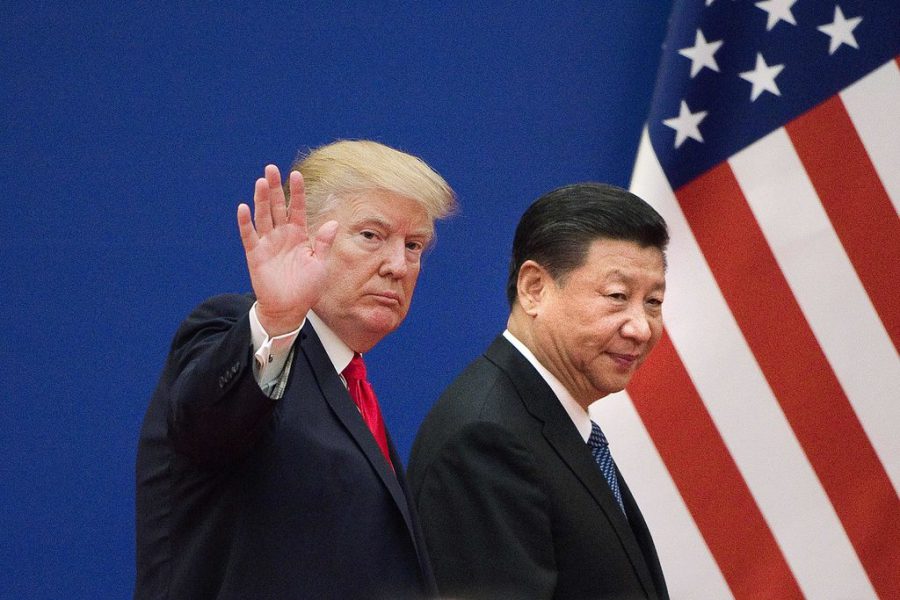News
Sign up for recent trade news that can affect your business:

Robert Jungmann has been importing hemp fabric from China for more than 20 years for the T-shirts he manufactures in Los Angeles.
The news that the Trump administration is raising tariffs on Chinese textile imports from 10 percent to 25 percent on top of current tariffs is a big blow to his Jungmaven label.
“This tariff affects us hugely,” he said. “Our No. 1 expense is the cost of goods, and now it went up an additional 25 percent. That hurts.”
Other manufacturers faced with the Chinese textile tariff can shift their sourcing to other parts of the world, but Jungmann has a different problem. The only country that manufactures hemp fabric is China.
“There is no place we can purchase hemp fabric. We can’t purchase it from Europe, Vietnam or the United States. Only China does what we purchase. There is no option,” he said. He could switch to another fabric, but hemp has been the company’s calling card ever since he started making hemp T-shirts in 1996. He now cuts and sews about 1,500 to 2,000 men’s and women’s T-shirts a week.
Jungmann said he will have to restructure his prices and factor in this additional tariff increase, which goes into effect for all goods coming in after June 1. “I am putting together my next line sheet as we speak. We had already built in the 10 percent tariff increase but not the 25 percent,” he said.
More tariffs on top of current textile tariffs are just one part of the growing trade dilemma with China. The Trump administration is now threatening to impose up to 25 percent tariffs on just about all goods coming from China, which would include apparel and footwear as well as all apparel components, from zippers and buttons to trims and embellishments.
The effect on the U.S. retail industry as well as clothing and shoe importers would be tremendous. “Our members are freaked out,” said Steve Lamar, the executive vice president of the American Apparel & Footwear Association, whose hundreds of members encompass some of the largest importers and manufacturers in the United States. They include VF Corp., PVH Corp., Ralph Lauren Corp., Perry Ellis International Inc. and Bloomingdale’s.
“This is kind of the nuclear option that people were fearing and that the president has invoked,” Lamar added. “It really hits everybody.”
Importers were totally taken by surprise by the news because a few weeks ago President Trump was talking about a potential trade deal with China after months of trade negotiations. Now he has reversed course and is headed in the opposite direction.
Even if people are manufacturing their goods in the United States, there are certain components that are predominantly manufactured in China. Some of those are the chemicals and dyes used to treat and dye fabric.
At Swisstex California, a major dye and finishing house in Los Angeles that works with companies such as Nike and Under Armour, company owners have seen the price of Chinese chemicals and dyes jump 30 percent in the last year as tariffs and short supplies have added to pricing pressures.
“This has a dramatic impact on us,” said Keith Dartley, president of Swisstex Direct, a partner with Swisstex California. “Most of the dyes and chemicals made in the world are produced in China and India. Recently there has been a shortage of dyes and chemicals as China is shutting down a lot of the dirtier plants over there.”
While chemical prices are going up, much of the knit fabric the company uses is made in the United States or Latin America. So Swisstex California also sees an upside to the tariff situation. Maybe more companies will be manufacturing apparel in the United States and the Americas as China becomes more expensive.
Swisstex opened a factory in El Salvador after the Dominican Republic-Central American Free Trade Agreement went into effect in 2006. The complex now has a cut-and-sew factory as well as a dye-and-finishing facility that employs more than 200 people. “This could create a significant opportunity for this region because it will look more attractive for production,” Dartley said.
The new 25 percent additional tariff on textiles has Steve Barraza, owner of the womenswear manufacturer Tianello, looking for new silk sources to make the blouses and other items his 28-year-old company cuts and sews near downtown Los Angeles.
He said he is considering travelling to Thailand to check out Thai silk, which normally has no duty because silk is not made in this country.
The 25 percent tariff on Chinese silk means it will cost $5 more to manufacture a blouse, which normally uses two yards of fabric. By the time that blouse is sold in a store, it will add an additional $20 to the price tag, Barraza said.
“Maybe this will give me an opportunity to get out of my box and search for something different,” he said. On the bright side, he hopes more people will be buying his domestically made garments.
If the Trump administration does decide to impose an additional 25 percent tariff on apparel and footwear, it could take effect as early as June 25 after public comments are heard from industries affected by the tariff, said Richard Wortman, a Los Angeles customs attorney with Grunfeld, Desiderio, Lebowitz, Silverman & Klestadt.

After extensive discussions on trade in steel and aluminum covered by
the action taken pursuant to Section 232 of the Trade Expansion Act of
1962 (19 U.S.C. §1862), the United States and Canada have reached an
understanding as follows:
1. The United States and Canada agree to eliminate, no later
than two days from the issuance of this statement:
a. All tariffs the United States imposed under Section 232 on
imports of steel and aluminum products from Canada; and
b. All tariffs Canada imposed in retaliation for the Section 232
action taken by the United States (identified in Customs Notice 18-08
Surtaxes Imposed on Certain Products Originating in the United States,
issued by the Canada Border Services Agency on June 29, 2018, and
revised on July 11, 2018).
2. The United States and Canada agree to terminate all pending litigation
between them in the World Trade Organization regarding the Section 232 action.
3. The United States and Canada will implement effective measures to:
a. Prevent the importation of steel and aluminum that is
unfairly subsidized and/or sold at dumped prices; and
b. Prevent the transshipment of steel and aluminum made outside
of Canada or the United States to the other country. Canada and the
The United States will consult together on these measures.
4. The United States and Canada will establish an agreed-upon
process for monitoring steel and aluminum trade between them. In
monitoring for surges, either country may treat products made with
steel that is melted and poured in North America separately from
products that are not.
5. In the event that imports of steel or aluminum products surge
meaningfully beyond historic volumes of trade over a period of time,
with consideration of market share, the importing country may request
consultations with the exporting country. After such consultations,
the importing party may impose duties of 25 percent for steel and 10
percent for aluminum in respect to the individual product(s) where the
surge took place (on the basis of the individual product categories
set forth in the attached chart). If the importing party takes such
action, the exporting country agrees to retaliate only in the affected
sector (i.e., aluminum and aluminum-containing products or steel).

On May 9, the Office of the U.S. Trade Representative (USTR) is scheduled to publish a modification to the Section 301 Tariffs increasing the duty rate on the products covered in the September 2018 Federal Register Notice from the current rate of 10% to 25%. According to the notice, these changes are scheduled to take effect on May 10. U.S. Customs and Border Protection (CBP) has updated the ABI to include these changes for any entries scheduled for May 10 onwards.
This modification is a result of what the USTR calls a “lack of progress in the additional rounds of negotiations [with China] since March 2019” and after a May 5 tweet from President Trump where he states that “the Trade Deal with China continues, but too slowly, as they attempt to renegotiate.”
Reported by The NCBFAA

By Ana Swanson and Keith Bradsher
WASHINGTON — President Trump, emboldened by a strong American economy and wary of criticism that an evolving trade deal with China would not adequately benefit the United States, threatened on Sunday to impose more punishing tariffs on Chinese goods in an attempt to force additional concessions in a final agreement.
Mr. Trump, in a tweet, warned that he would increase tariffs on $200 billion in Chinese goods at the end of this week and “shortly” impose levies on hundreds of billions of dollars of additional imports. Dozens of high-level Chinese officials are arriving in Washington this week for what was expected to be a final round of negotiations toward a trade agreement, at least in principle.
Mr. Trump’s threat caught Chinese officials by surprise. On Monday morning in Beijing, they were trying to decide whether Vice Premier Liu He should go ahead with his visit later this week to Washington, said people familiar with the talks who insisted on anonymity because they were not authorized to comment publicly on the negotiations.
President Trump’s tweets come after Chinese officials took a tough line in high-level trade negotiations last week in Beijing, two of the people said. Chinese negotiators said they were reluctant to make any agreement that would require China’s legislature to approve changes to current law. The legislature in March already approved a new foreign investment law that added protections for foreign companies who fear they will be forced to transfer their technology and know-how to Chinese firms, but business groups and Trump administration officials said it didn’t go far enough.
Mr. Trump’s tweet fit a familiar pattern. He has routinely turned to tariffs to help speed negotiations and win concessions from America’s trading partners. The president has already hit Mexico, Canada, Europe and Japan with steel and aluminum tariffs and threatened to impose auto tariffs if they do not acquiesce to demands on trade and other matters. Mr. Trump has already imposed tariffs on $250 billion worth of Chinese goods and is now threatening to tax nearly all of the products China exports to America.
But it remains to be seen whether Mr. Trump’s threat will produce a beneficial trade agreement for the United States — or whether his attempts to pressure China will backfire by pushing already-tense relations past the breaking point. While the United States believes it has leverage over China, huge swaths of the American economy depend on access to the Chinese market for materials, products and sales.
Some of the recent strengthening of the American and Chinese economies — which has helped to quell fears of a possible recession — stems from expectations that the United States and China could soon end their monthslong trade war. Stock markets have recovered on expectations of an agreement and the Federal Reserve chairman, Jerome H. Powell, at a meeting last week, cited “reports of progress in the trade talks between the United States and China.”
The sudden hitch could change that. Asian markets opened broadly lower on Monday. Shares in China were down more than 5 percent in late morning trading.
Treasury Secretary Steven Mnuchin, who made a quick trip to Beijing last week, has expressed optimism about the trade talks, which he said are in “final laps.” And outside advisers to the White House have said a deal is more likely this week than not.
But in a tweet on Sunday, Mr. Trump said talks were progressing “too slowly” and suggested that the Chinese were trying to “renegotiate” the deal. Mr. Trump repeated a threat to raise the rate on existing tariffs to 25 percent and tax $325 billion worth of China’s exports to the United States that aren’t already subject to levies.
For 10 months, China has been paying Tariffs to the USA of 25% on 50 Billion Dollars of High Tech, and 10% on 200 Billion Dollars of other goods. These payments are partially responsible for our great economic results. The 10% will go up to 25% on Friday. 325 Billions Dollars….
— Donald J. Trump (@realDonaldTrump) May 5, 2019
For further reading: https://www.nytimes.com/2019/05/05/business/trump-tariffs-china-trade-talks.html